Mugwort / Spring / Summer / Autumn / Edible
Mugwort is a really interesting plant that has a boundless number of historical and ritual-based uses, on top of that is a potent flavoured herb with many uses within the kitchen.
Common Names
Mugwort, Sailors Tobacco, Wild Wormwood.
Botanical Name
Artemisia vulgaris
Scientific Classification
Kingdom – Plantae
Order – Asterales
Family – Asteraceae
Physical Characteristics of Mugwort
Overall Mugwort is quite a pretty plant, often growing amongst it’s friends with a slender look, I often see it arching slightly in one direction, The leave are often glistening in the wind as you see the silver underside and green overside of the leaf interchanging in the light.
Stems
They are erect, grooved and tend to have a red/purple tinge.
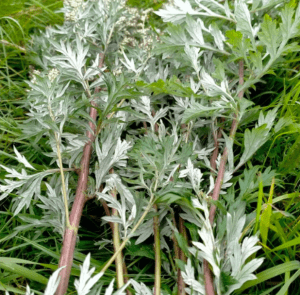
Leaves
Mugwort leaves are green on top and white underneath, they have pointed tips and purplish stems. They are deeply lobed and have an aromatic scent, similar to Rosemary or Sage.
Flowers
The flowers are numerous, grow in clusters and are red to yellow fading to brown as they mature.
Seeds
very small and insignificant.
Root
Generally 10-15cm long, light brown and woody, 2-5 cm thick.
Habitat
Mugwort is native to Europe and Asia and has naturalised much of the world; it is fairly common throughout the UK.
Found growing along roads, ditches and fields. Preferring disturbed ground.
Known Hazards
This plant Contains the chemical thujone, which is said to promote lucid dreams.
The plant might be poisonous in large doses.
Skin contact can cause dermatitis in some people.
Probably unsafe for pregnant women as it may stimulate the uterus to contract and induce abortion.
Could be Confused with
Wormwood ( Artemesia absinthium) but Wormwood has silvery leaves top and bottom and has much more showy flowers.
A very deadly mistake would to confuse the young plants with Monkshood . The leaves of Monkshood do not have the silver underside, the flowers are completely different, and it is way less common – but give its toxicity it would be wise to familiarise yourself with the differences.
It could also be confused with the Creeping Buttercup, which has similar leaves but very different flowers.
Edible Uses
The leaves and shoots are edible raw or cooked, they are very aromatic and slightly bitter.
The flavour goes well with fatty meat and oily fish.
Leaves, flowers and shoots can be used to make a simple tea just by steeping them in hot water.
It can also be dried and smoked and is said to improve appetite.
It was used to flavour beers before hops were commonly available.
Notes on Herbal uses
People use Mugwort for anxiety, irregular periods, colic, insomnia, and many other conditions, but there is no good scientific evidence to support these uses.
Extra notes from the Foragers
Mugwort has also been used from ancient times as a remedy against fatigue and to protect travellers against evil spirits and wild animals. Roman soldiers put Mugwort in their sandals to protect their feet against fatigue and cramps.



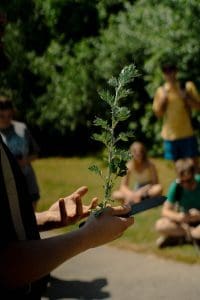
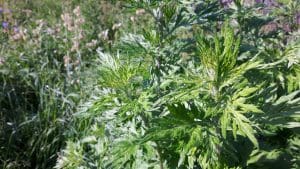
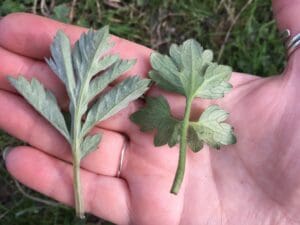
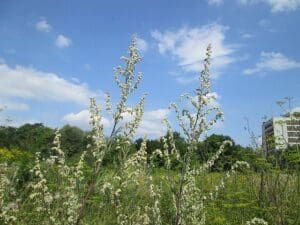
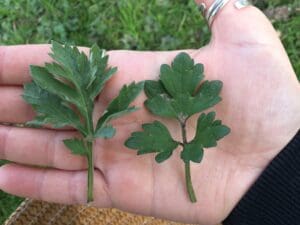
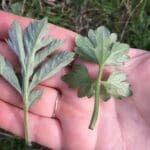
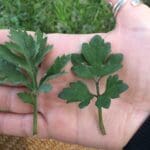
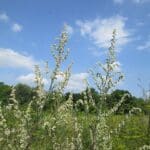
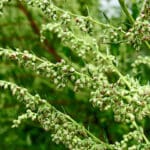



2 replies on “Mugwort (Artemisia vulgaris) Identification”